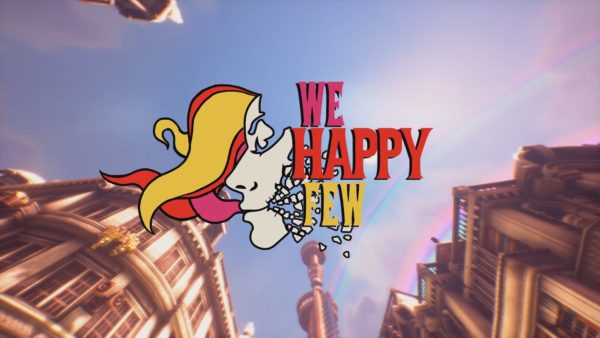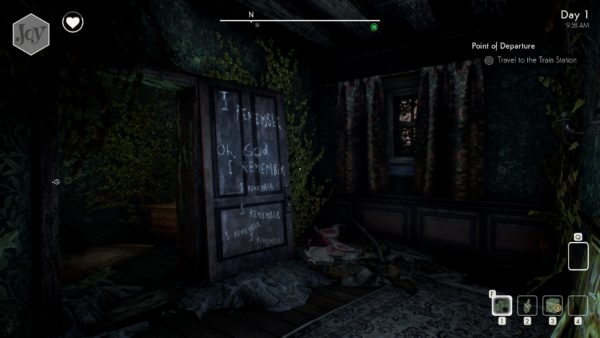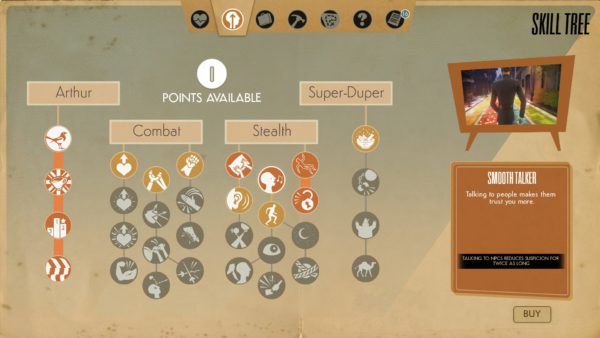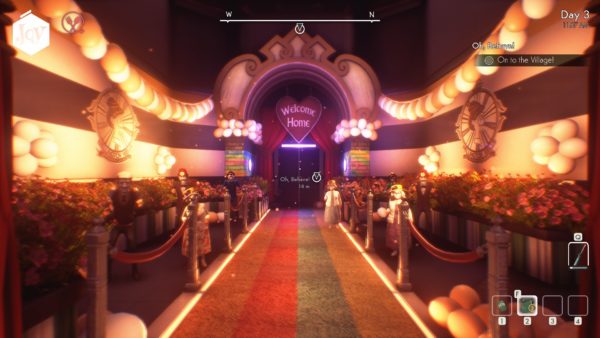Kickstarter, Early Access and all the other tools that enable developers to get an idea in front of players before it’s fully formed are both a blessing and a curse. They’ve brought a lot of ideas to reality that otherwise wouldn’t have happened otherwise, bringing us unique game experiences that have helped shape the medium for the better. On the other hand they have also seen many great ideas fall prey to the tyranny of the crowd or the popular idea of the day. That is the fate that has befallen We Happy Few, a game I Kickstarted back in 2015 as it is not the game I remember backing all those years ago. The mechanics that drew me to the it initially, taking a new approach to how stealth games could function, and the intriguing narrative they sought to craft were usurped by a procedurally generated survival sim. That’s not what I, nor I think a lot of their original backers, were seeking to support.

You are Arthur Hastings, a redactor working for the Wellington Wells’ Department of Archives, Printing, and Recycling whos job is to censor and approve old news articles to make sure that only good news makes it to the good citizens of your town. In completing your job though you come across an old news article of you and your brother and suddenly it dawns on you: the whole town did a Very Bad Thing a long time ago. You refuse to take your joy and quickly discover that the town of Wellington Wells isn’t all it appears to be. Not long after skipping your prescribed medication you’re chased out of the town and find yourself among the downers, the ones who can’t or won’t take their joy. You resolve yourself to find your brother by any means necessary, even if it means remembering what that Very Bad Thing was.
We Happy Few’s graphics are heavily stylized, taking a lot of inspiration from other retrofuture games like Bioshock. The game’s visuals are at their best in the city when you’re on Joy, the vibrant and oversaturated colours really selling the idea that none of this could possibly be real and it’s all a drug induced fever dream. Unfortunately the first few hours of the game have you out in the more drab areas which are nowhere near as interesting visually. The graphics are also more inline with previous generation games, something which isn’t completely unexpected given how long it has been in Early Access. It’d probably be a little less noticeable if the procedural generation was a little more varied with the supposedly “random” bits usually consisting of the same building blocks and NPCs repeatedly. All this being said it does run particularly well, even with a lot of things on screen, so it’s got that going for it at least.

From a gameplay perspective it’s neither a true survival game nor a traditional single player RPG as it takes cues from both. You have your usual survival mechanics like food and water but they’re not critical to keep up, you’ll just have a few negative buffs applied to you if they run out. Progression comes in the form of a very traditional XP and talent system with weapon and gear upgrades coming from crafting. The world you’ll be running around in is mostly procedurally generated with certain fixed areas for story missions and the like. There’s a small smattering of open world things around as well with random encounters and side missions scattered around the map. All in all whilst it’s a pretty comprehensive game there’s a noticeable schism between the handcrafted parts and the world that the procedural engine generates. Honestly there’s large chunks of the game I think that could be wholly abandoned which would make for a much tighter experience but unfortunately I don’t think that’s ever going to happen.
Combat takes the form of the typical first person melee style, along with all the issues that come along with that. All your weapons have durability as well, meaning that you’ll need to carry an array of different implements to ensure you can whack your way out any situation you find yourself in. The game is most certainly designed with stealth in mind so it’s somewhat understandable that the combat didn’t get as much love as it should’ve. It does make for an unfortunately frustrating experience when you don’t have much choice in whether you can fight or not. On the plus side though you can walk/run faster than anyone else in the game so realistically there’s not much stopping you from simply legging it to a safe spot if you ever find yourself in a pickle.

The stealth system is much better than other comparable games although given it was meant to be the game’s flagship feature it is a bit of a let down. The traditional stealth mechanics all work as you’d expect like hiding in tall grass, getting out of line of sight and NPCs being able to be distracted by thrown objects. The social stealth system however is the real disappointment as it was originally billed as a balancing game of using Joy in order to blend in appropriately. The long and short of it is that you don’t really need to take Joy at all unless there’s a specific progression blocker for it. You can freely walk around the towns off your joy and no one will say anything and the cameras that detect you can be easily run past without causing too much of a fuss. I had hoped that once I got back into the town proper the game would start to pick up a bit with the additional mechanics at play but unfortunately it didn’t.
Progression comes in random bursts, typically at the end of story missions. Doing anything in the open world doesn’t seem to reward you with much as I never appeared to level up when I was traipsing around so in the end I just gave up on it. Crafting is also a bit of a crapshoot too as whilst you can carry a lot there’s not a lot of useful things for you to make. There’s blueprints for you to track down but honestly I never found anything worthwhile in them. That, combined with the utter lack of accessible stashes, means that you’re often carrying around a ton of useless stuff that you feel like you need to hold on to “just in case”. I toyed with the idea of tracking down a mod for the game to lift the inventory limit but frankly at that point I was already done with what We Happy Few had to offer.
The story was probably the standout part of We Happy Few which is a shame that it wasn’t given a better vehicle to shine. You see with all the running about between missions through repetitive procedurally generated terrain the pacing of the story gets completely lost. There are numerous memorable scenes, even in the game’s opening moments, but they’re then lost when it takes you half an hour of wandering about to get to the next small tidbit. The voice actors should be commended for the incredible job they did with making the characters come alive as it was during those moments that I really started to feel like there was something to like in We Happy Few. Maybe I should’ve just watched a stream of the game instead.

We Happy Few is a game that started out with a great concept that unfortunately failed in its execution. The grab bag of mechanics coupled with the procedurally generated open world meant that there was no real single driving force that pushed me to keep playing more. Instead I felt like there was just too much time between the games stand out moments, taking a bat to the story’s pacing and, most unfortunately, my enjoyment of it. I really do hope that some of the remaining games I’ve Kickstarted don’t go down a similar path as I’m beginning to lose faith in my ability to pick good ideas when they’re at such a nascent stage of their development. Hopefully I’ll be proven wrong soon.
Rating: 6.0/10
We Happy Few is available on PC, Xbox One and Playstation 4 right now for $84.95. Game was played on the PC with 3 hours of total playtime and 8% of the achievements unlocked.



